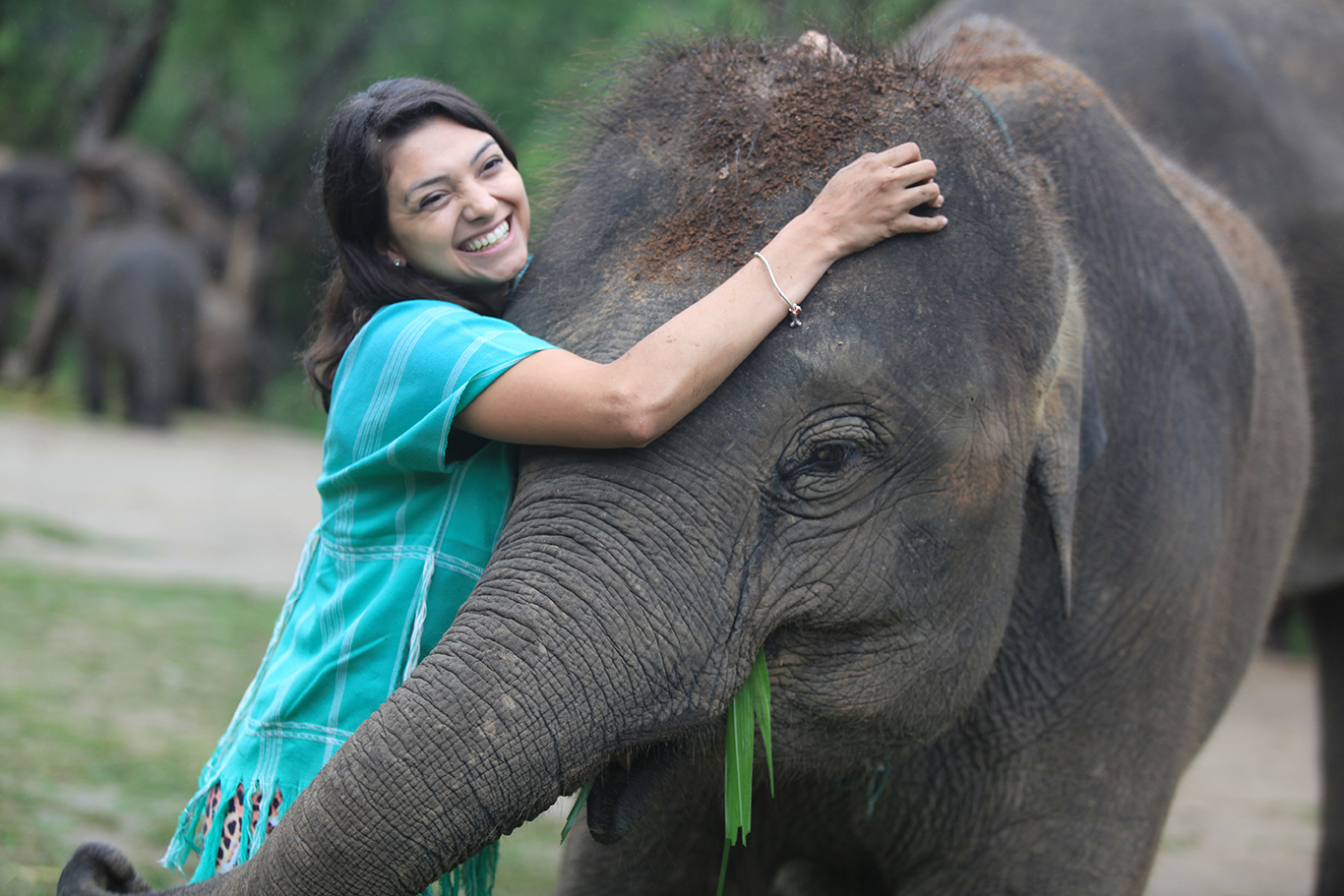Introduction to Wildlife Sanctuaries
Welcome to a world where majestic creatures roam freely, where nature’s beauty is untamed, and where the need for conservation is greater than ever. Wildlife sanctuaries around the globe serve as havens for endangered species and habitats at risk. Join us on a journey to explore some of the most amazing wildlife sanctuaries in countries worldwide that rely on our support. Let’s delve into the importance of protecting these precious ecosystems and how you can make a difference, one donation or volunteer effort at a time.
The Importance of Supporting Wildlife Conservation Efforts
As wildlife sanctuaries strive to protect and preserve our planet’s precious biodiversity, supporting conservation efforts is crucial. By donating, volunteering, or spreading awareness, we can make a real difference in safeguarding endangered species and their habitats.
Every contribution counts towards the survival of vulnerable wildlife populations facing threats like habitat loss, poaching, and climate change. Wildlife sanctuaries serve as havens for animals to thrive in their natural environments free from harm.
By supporting these conservation initiatives, we are not only protecting individual species but also preserving entire ecosystems. Biodiversity is essential for maintaining a healthy planet where all living organisms coexist harmoniously.
Together, we can ensure that future generations have the privilege of experiencing the beauty and wonder of our world’s diverse wildlife. Let’s stand united in our commitment to support wildlife conservation efforts around the globe.
Africa:
Africa is a continent renowned for its stunning wildlife sanctuaries and reserves that are home to a diverse range of animal species. One of the most iconic destinations in Africa for wildlife enthusiasts is Kenya’s Maasai Mara National Reserve. This vast savannah landscape offers incredible opportunities to witness the famous Great Migration, where millions of wildebeest, zebras, and other animals cross the plains in search of fresh grazing grounds.
Heading further south, South Africa boasts the world-famous Kruger National Park, known for its abundance of wildlife including the Big Five – lions, elephants, buffalos, leopards, and rhinos. The park provides visitors with unforgettable safari experiences amidst breathtaking natural scenery.
Both these African countries offer unique and enriching encounters with nature that highlight the importance of conserving our planet’s precious biodiversity.
– Kenya – Maasai Mara National Reserve
Kenya’s Maasai Mara National Reserve is a wildlife paradise teeming with diverse species in their natural habitat. The expansive savannah grasslands are home to the famous Big Five – lions, elephants, buffalos, leopards, and rhinos. Visitors can witness the annual Great Migration of wildebeest and zebras crossing the Mara River, a spectacle like no other.
The Maasai people coexist harmoniously with the wildlife in this region, adding cultural richness to the experience for visitors. Safari tours offer up-close encounters with majestic animals while also supporting local conservation efforts. By visiting or donating to organizations working in Maasai Mara, you can contribute to preserving this unique ecosystem for future generations.
Supporting sustainable tourism initiatives ensures that these magnificent creatures continue to roam freely in their natural environment without fear of extinction due to human encroachment. Join hands in protecting Kenya’s Maasai Mara National Reserve for its biodiversity and ecological significance on a global scale.
– South Africa – Kruger National Park
South Africa’s Kruger National Park is a wildlife enthusiast’s paradise, spanning over 7,500 square miles of diverse landscapes. From the iconic Big Five – lions, leopards, elephants, rhinos, and buffaloes – to a myriad of bird species and smaller mammals, this park offers an unforgettable safari experience.
The park’s conservation efforts are crucial in protecting these majestic animals from poaching and habitat loss. By supporting initiatives that focus on anti-poaching measures and community involvement, you can contribute to safeguarding these precious species for future generations.
Visitors can immerse themselves in the beauty of the African savannah while staying at luxurious lodges or rustic campsites within the park. Whether on a guided game drive or a self-drive adventure, encountering wildlife in their natural habitat is an awe-inspiring experience.
Kruger National Park provides not only breathtaking encounters with wildlife but also serves as a beacon for conservation efforts in South Africa. Your support can make a difference in preserving this natural wonder for years to come.
Asia:
Asia is home to some of the most diverse and exotic wildlife sanctuaries in the world. One such gem is India’s Jim Corbett National Park, where you can spot majestic Bengal tigers roaming freely in their natural habitat.
Indonesia’s Komodo National Park offers a unique experience with its famous Komodo dragons, the world’s largest lizard species. Witnessing these prehistoric creatures up close is an adventure like no other.
Both parks serve as crucial conservation sites for endangered species, highlighting the importance of supporting wildlife protection efforts. Whether through donations or volunteering, every contribution makes a difference in safeguarding these precious ecosystems.
Exploring Asia’s wildlife sanctuaries not only allows you to connect with nature but also provides an opportunity to contribute towards preserving our planet’s biodiversity.
– India – Jim Corbett National Park
India is home to one of the most diverse wildlife sanctuaries in the world – Jim Corbett National Park. Located in Uttarakhand, this park is renowned for its population of Bengal tigers and stunning landscapes that attract nature enthusiasts from all over.
The park offers a unique opportunity to witness these majestic big cats in their natural habitat, along with other exotic wildlife such as leopards, elephants, and various bird species. The lush greenery and picturesque surroundings make it a paradise for wildlife photographers and adventurers alike.
Visitors can participate in safaris, bird watching tours, and nature walks to immerse themselves in the beauty of this biodiverse sanctuary. Conservation efforts are crucial here to protect the endangered species that call Jim Corbett National Park their home.
By supporting initiatives aimed at preserving these habitats and wildlife populations, we can ensure future generations have the privilege of experiencing the wonders of places like Jim Corbett National Park firsthand.
– Indonesia – Komodo National Park
Welcome to the land of dragons – Indonesia’s Komodo National Park. Home to the famous Komodo dragons, this UNESCO World Heritage Site is a must-visit for wildlife enthusiasts. The park consists of three main islands: Komodo, Rinca, and Padar, each offering unique opportunities to observe these ancient creatures in their natural habitat.
Aside from the legendary Komodo dragons, the park boasts stunning landscapes with rugged hillsides, pristine beaches, and vibrant coral reefs. It’s a paradise for snorkelers and divers looking to explore the underwater world teeming with marine life.
If you’re up for an adventure, trekking through the park’s lush forests provides a chance to encounter not only Komodo dragons but also various bird species and other wildlife. The panoramic views from the hilltops are simply breathtaking.
Supporting conservation efforts at Komodo National Park is crucial to ensure the protection of these magnificent creatures and their ecosystem for future generations. Consider donating or volunteering to help preserve this incredible natural wonder.
Central and South America:
Central and South America are home to some of the most diverse and stunning wildlife sanctuaries in the world. Costa Rica’s Tortuguero National Park is a haven for sea turtles, with its lush rainforests and beautiful beaches where these majestic creatures nest. The Galapagos Islands, off the coast of Ecuador, offer a unique opportunity to witness evolution in action.
These islands inspired Charles Darwin’s theory of natural selection, making them an essential destination for anyone passionate about wildlife conservation. Exploring this archipelago allows visitors to see up close species found nowhere else on Earth.
Supporting these conservation efforts is crucial to preserving these ecosystems for future generations. Whether through donations or volunteering your time, every little bit helps protect the rich biodiversity found in Central and South America’s wildlife sanctuaries.
– Costa Rica – Tortuguero National Park
Nestled along the Caribbean coast of Costa Rica lies the enchanting Tortuguero National Park, a haven for wildlife enthusiasts and nature lovers. This biodiverse sanctuary is renowned for its green sea turtle nesting grounds, where these majestic creatures come ashore to lay their eggs under the moonlit sky.
Exploring Tortuguero National Park is like stepping into a tropical paradise teeming with exotic flora and fauna. From vibrant toucans and playful monkeys swinging through the trees to elusive jaguars prowling in the shadows, every corner of this park holds a new surprise waiting to be discovered.
Embark on a boat tour through the park’s intricate network of canals and waterways, immersing yourself in the lush rainforest surroundings while keeping an eye out for crocodiles basking in the sun along the riverbanks. Witnessing firsthand the delicate balance of nature at Tortuguero National Park is an experience that will stay with you long after you leave its pristine shores.
– Galapagos Islands, Ecuador
Nestled in the Pacific Ocean, the Galapagos Islands are a haven for unique wildlife and breathtaking landscapes. This volcanic archipelago off the coast of Ecuador is home to species found nowhere else on Earth. Imagine swimming with playful sea lions or witnessing giant tortoises roaming freely in their natural habitat.
The Galapagos Islands have captivated scientists, conservationists, and nature enthusiasts for centuries. Charles Darwin’s observations here inspired his theory of evolution by natural selection. The diverse ecosystems, from lush forests to pristine beaches, offer endless opportunities for exploration and discovery.
By supporting conservation efforts in the Galapagos Islands, you can help protect endangered species like the iconic blue-footed boobies and marine iguanas. Whether through donations or volunteering opportunities, every contribution makes a difference in preserving this ecological treasure for future generations to enjoy.
Europe:
Europe boasts some of the most breathtaking wildlife sanctuaries on the planet. One gem worth mentioning is Spain’s Doñana National Park, a UNESCO World Heritage Site located in Andalusia. This park is a haven for diverse bird species, including flamingos and Spanish imperial eagles.
Doñana National Park also houses endangered Iberian lynxes and other unique fauna. The park’s varied landscapes of marshlands, dunes, and forests provide a rich ecosystem supporting numerous species. Visitors can explore this natural wonder through guided tours or self-guided hikes to witness its beauty firsthand.
Conservation efforts are crucial in preserving these habitats and protecting the wildlife that call them home. Supporting initiatives like Doñana National Park ensures future generations can continue to experience the wonders of European wildlife up close.
– Spain – Donana National Park
As we have explored some of the amazing wildlife sanctuaries around the world, it is evident that these natural habitats are crucial for preserving biodiversity and protecting endangered species. Supporting wildlife conservation efforts through donations, volunteering, or spreading awareness can make a significant impact on the survival of these precious ecosystems.
Donana National Park in Spain stands as a testament to the beauty and importance of wildlife sanctuaries. By supporting initiatives that safeguard this park and others like it across the globe, we contribute to the well-being of our planet and future generations. Let’s unite in our efforts to protect and preserve these invaluable havens for wildlife. Together, we can make a difference!
A few sanctuary examples:
Elephant Nature Park, Thailand
https://www.elephantnaturepark.org/enp/
Green Hill Valley Elephant Camp, Myanmar
Tiger Tops Elephant Camp, Nepal
https://tigertops.com/lodges/elephant-camp














